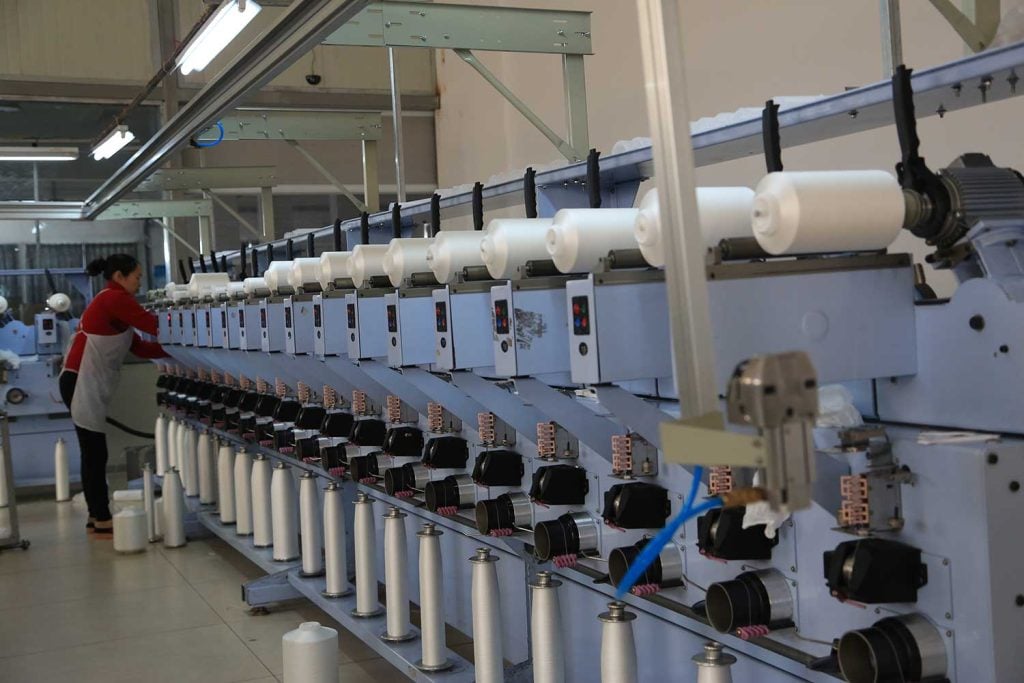The twist is one of the most important parameters of a yarn: besides the influence on quality characteristics such as strength and elongation, it affects the appearance and the performance of the finished product: It can impact the dynamics of your final product in many ways – strength, elongation, diameter, torque, luster, softness, etc. Accuracy, but in particular uniformity of the twist is crucial, since light reflection from the yarn or the produced fabric surface changes.

Table of Contents
Twist of multifilament yarns
Unlike staple spun yarns, multifilament yarns lose strength as the twist is increased, therefore it is important to know the physical requirements required in the end product. Elongation increases with an increasing twist, as does diameter, torque, and luster. Yarns become stiffer with twist therefore softness decreases.
Twist level
The twist level can be measured in Turns per inch (TPI) or Turns per meter(TPM). In order to maintain the same surface twist angle and similar yarn/thread characteristics for all sizes of sewing thread, Twist Multipliers (TM) are used to establish the level of TPM or TPI required. If one wishes to know the TM being used, this can be obtained by multiplying the twist level by the square root of the linear density of the yarn e.g. TM = TPM x Square Root of Linear Density in Tex/1000.
To know what twist a yarn has in it, this information can be found in the yarn specification or can sometimes be found in the item description. An example of a description would be 1000DN Z060, this means the yarn has 60 TPM in the Z direction. Below shows how TPM relates to TPI
- 40 TPM = 1 TPI
- Z060 TPM = 1.5 TPI Z
Twist level of filament yarns
Filament yarns, depending on the denier, can have a filament count ranging from 70 to 300, and adding a twist can help keep these strands together, however too much can damage the yarn and/or cause it to be too lively by having too much torque.
The more twist a yarn has, the more cost is involved, so depending on what you are trying to achieve through sewing or yarn processing, the proper twist is critical.
Twist level of sewing thread
To ensure optimum sewing performance, the correct twist levels must be applied to a sewing thread construction. Sewing threads having a round cross-section tend to sew better than those with a flatter cross-section. Monocords having no twist will perform poorly, some twist is recommended. Bonded Multifilament cabled sewing threads are ideal for industrial sewing but sometimes twisting in one end of the yarn is enough to sew certain types of material.
Thread Twisting Affects Four Aspects of the Sewing Process
Thread twists can affect the sewing process in several ways. Here are a few ways thread twist can affect the sewing process:
- Thread breakage: When the sewing thread is twisted too tightly or too loosely, it can cause the thread to break during the sewing process.
- Tension issues: Thread twists can also affect the tension of the sewing machine. If the thread is twisted too tightly, it can cause the fabric to pucker or the stitches to be too tight. If the thread is twisted too loosely, the stitches can be too loose or uneven.
- Thread feed issues: If the thread is twisted too tightly, it can cause the thread to “jump” or “bounce” as it feeds through the machine, leading to uneven stitches or skipped stitches.
- Needle damage: Thread twist can also cause damage to the sewing machine needle. When the thread twists around the needle, it can cause the needle to bend or break.
To prevent thread twists from affecting the sewing process, it’s important to choose the right thread for your project and ensure that the thread is feeding smoothly through the machine. It’s also important to check the tension of the sewing machine and adjust it if necessary. Finally, be sure to replace the needle regularly to prevent needle damage.
Works Cited: Industrial Multifilament Yarns and Importance of Twist